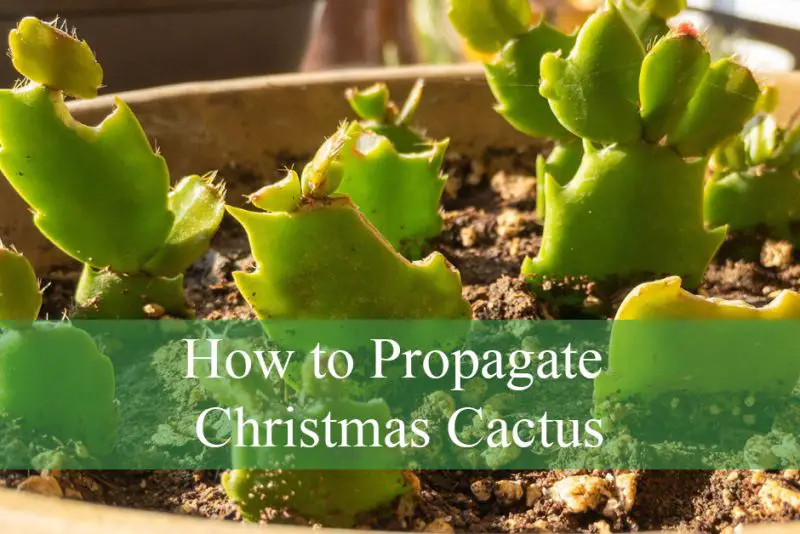Propagating a Christmas cactus is not only a rewarding experience but also a great way to multiply your favorite holiday plant without spending a dime. With the right approach, you can easily turn a few healthy cuttings into thriving new plants that bloom year after year.
In this guide, you’ll learn everything you need to know about how to propagate Christmas cactus successfully and quickly, whether you’re a beginner or an experienced gardener.
Understanding the Christmas Cactus

The Christmas cactus, or Schlumbergera, is a popular houseplant known for its colorful blooms that typically appear around the winter holidays. Unlike traditional cacti, it originates from the humid rainforests of Brazil, where it grows on tree branches rather than in arid deserts. This epiphytic plant prefers indirect light, moderate humidity, and well-draining soil. Because of its unique growth habits and segmented stem structure, it is particularly well-suited for propagation.
Each stem of the Christmas cactus is made up of flat, leaf-like segments that are easy to snap apart. These segments not only store moisture but also contain the plant’s growth nodes, making them ideal for cloning. A healthy parent plant, free from pests and diseases, will produce the best propagation results.
Knowing the plant’s natural growth pattern helps in choosing the right time and method for propagation. Typically, propagation is most successful in late spring to early summer when the plant is in an active growth phase.
The Best Time to Propagate Christmas Cactus
Timing plays a crucial role in the propagation process. While the Christmas cactus can technically be propagated at any time of year, the best results occur when the plant is not blooming. Propagation during the active growing season—usually between late spring and early summer—allows the cuttings to root and establish themselves more quickly.
Avoid propagating during or immediately after the blooming season. During this time, the plant’s energy is directed toward flowering rather than root development. It’s also best to avoid propagation in winter when the plant is dormant and less likely to produce new growth.
If your cactus has just finished blooming and appears healthy and vigorous, this is a good opportunity to prune it and use the trimmed segments for propagation. Healthy cuttings taken at the right time will root faster and grow into robust new plants.
Choosing and Preparing Cuttings
The success of propagation begins with selecting the right segments from the parent plant. Look for firm, bright green stems that are at least two to three segments long. These segments should be free from blemishes, signs of rot, or insect damage. Avoid using overly mature or woody stems, as they may be slower to root.
Using a clean, sharp knife or scissors, gently remove the segments by cutting just above a segment joint. Let the cuttings sit out in a dry, shaded area for about 24 to 48 hours. This allows the cut end to callous over, which helps prevent rot once the cutting is placed in soil or water.
During this resting period, keep the cuttings away from direct sunlight and extreme temperatures. A room with stable conditions and good air circulation is ideal. Once the cut ends have formed a dry, protective layer, the cuttings are ready to be propagated.
Propagating in Soil
Soil propagation is one of the most common and effective methods for growing new Christmas cactus plants. After the cuttings have calloused, they can be planted in a suitable potting mix. A cactus or succulent mix works well, but you can also create your own blend using equal parts of potting soil, sand, and perlite to improve drainage.
Fill a small pot with the moistened soil mixture and insert the cut end of each segment about one inch deep. Firm the soil gently around the cutting to hold it in place. Place the pot in a warm, bright location with indirect light. Avoid direct sunlight, which can stress the cutting before roots have developed.
Water sparingly during the initial rooting phase. Keep the soil barely moist, allowing the top layer to dry out between waterings. Overwatering can lead to rot and prevent root development. Within three to four weeks, the cuttings should begin to produce roots and new growth.
Propagating in Water
For gardeners who prefer a visual approach, propagating Christmas cactus in water is a simple and satisfying alternative. This method allows you to monitor root growth and ensure successful propagation before transferring the cutting to soil.
To propagate in water, fill a small glass or jar with just enough water to cover the bottom tip of the cutting. Use a toothpick or piece of plastic wrap with a hole to suspend the cutting above the water if necessary. Make sure only the bottom of the cutting touches the water to prevent stem rot.
Place the container in a bright spot with indirect sunlight. Change the water every few days to prevent stagnation and bacteria buildup. After two to three weeks, you should start to see roots forming at the cut end. Once the roots reach about an inch in length, transplant the cutting into a pot with well-draining soil.
Caring for New Christmas Cactus Plants
After your propagated cuttings have rooted and been transferred to soil, proper care is essential for their continued growth. New plants should be placed in a location with bright, filtered light and stable temperatures between 60°F and 70°F. Avoid cold drafts, intense heat, and direct sun.
Water when the top inch of soil feels dry. It’s better to underwater than overwater, as the plant is more tolerant of dry conditions than soggy roots. Use a diluted, balanced fertilizer every month during the growing season to support healthy development.
New growth typically appears within a few weeks of rooting. Once the plant establishes a robust root system, it will begin to grow more segments and, eventually, produce flowers during its natural blooming cycle in winter.
Common Mistakes to Avoid
Many propagation attempts fail due to common errors that are easy to avoid. Overwatering is perhaps the most frequent mistake, especially during the early rooting stage. Excess moisture can lead to fungal infections or rot that destroy the cutting before it has a chance to grow.
Skipping the callousing step is another issue. Placing freshly cut segments directly into soil or water without letting them dry increases the risk of decay. Be patient and give the cutting time to seal naturally.
Using poor-quality soil or placing the cutting in direct sunlight can also hinder success. A well-draining soil mix and indirect light are crucial for a healthy start. Additionally, neglecting to monitor for pests or diseases on either the parent plant or new cuttings can compromise the process.
Encouraging Faster Growth
If you’re eager to grow new Christmas cactus plants quickly, there are a few tricks to help speed up the process. Starting with healthy, actively growing segments will naturally give your propagation a head start. Providing consistent warmth, humidity, and indirect light creates the ideal environment for rooting and growth.
You can increase humidity by placing a plastic bag or dome over the pot during the rooting phase, but be sure to allow airflow to prevent mold. Gentle bottom heat from a heat mat can also promote faster root development, especially if room temperatures are cool.
Feeding the plant with a diluted liquid fertilizer after the first signs of new growth will encourage faster segment production and plant maturity. With the right care and conditions, your propagated Christmas cactus can grow into a mature plant within several months.
When to Repot New Plants
As your propagated Christmas cactus grows, it will eventually outgrow its small starter pot. Repotting is best done in spring or early summer when the plant is actively growing. Look for signs like roots emerging from the drainage holes or the soil drying out quickly after watering.
Choose a container that is slightly larger than the current pot and has good drainage. Gently remove the plant from its pot, taking care not to damage the roots. Place it in the new container with fresh cactus mix and water lightly.
Repotting not only gives the plant room to grow but also refreshes the soil and allows you to inspect the root system for any issues. After repotting, keep the plant in a shaded spot for a few days to help it adjust before returning it to brighter conditions.
FAQs About Propagating Christmas Cactus
What is the easiest way to propagate Christmas cactus?
The easiest method is soil propagation. After letting the cuttings callous, place them in moist, well-draining soil in indirect light until they root.
Can I propagate Christmas cactus in water?
Yes, water propagation works well and lets you observe root growth. Once roots form, transplant the cutting to soil.
How long does it take for cuttings to root?
Most Christmas cactus cuttings root within 3 to 4 weeks under optimal conditions.
Should I use rooting hormone?
Rooting hormone isn’t necessary but can speed up the process, especially if your cuttings are slow to develop roots.
When should I propagate Christmas cactus?
Late spring to early summer is ideal, as the plant is in its active growing phase and cuttings root more quickly.
Final Thoughts on Christmas Cactus Propagation
Learning how to propagate Christmas cactus and grow new plants fast is a gratifying endeavor that combines patience, care, and a little horticultural knowledge. Whether you choose to propagate in soil or water, the key lies in selecting healthy segments, providing the right conditions, and avoiding common mistakes.
With time and attention, you can turn a single Christmas cactus into a flourishing collection of holiday bloomers. These plants not only make beautiful additions to your home but also thoughtful gifts that carry a personal touch. With the techniques outlined here, you’ll be well on your way to mastering the art of Christmas cactus propagation.






